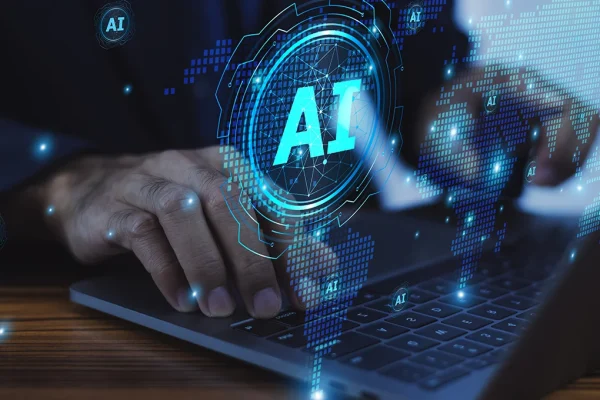As the magnetic hiss of an old cassette fills the room, a soft voice emerges—singing, speaking, breathing life into stories nearly forgotten. For Maya Sekine, these weren’t just bedtime tales. They were echoes of a culture nearly silenced. Her family’s Indigenous tongue, Ainu, long suppressed under Japanese colonization, now plays from analog tapes like a ghost reaching across generations.
Today, thanks to artificial intelligence, the ghost might finally speak again.
A Language on the Brink
Ainu, once widely spoken across Japan’s northernmost island of Hokkaido, is classified as “Critically Endangered” by UNESCO. In the late 19th century, around 15,000 people spoke Ainu fluently. But with Japan’s aggressive assimilation policies—including a ban on Ainu in schools—those numbers plummeted. By 1917, only 350 speakers remained. Now, native speakers are nearly extinct.
Though Japan officially recognized the Ainu as Indigenous in 2019, inclusion in education and media remains limited. Many young Ainu, like Sekine, have grown up without formal instruction in their own language. “None of my school friends spoke Ainu,” she recalls. “Even my relatives mostly used Japanese.”
Yet, despite the odds, the Ainu language is showing signs of revival—with a surprising ally: artificial intelligence.
Digitizing a Dying Language
In a high-tech lab at Kyoto University, Professor Tatsuya Kawahara is leading a groundbreaking project. His team is training AI models to understand, transcribe, and even speak Ainu—based on hundreds of hours of recordings preserved on fragile cassette tapes.
The process hasn’t been easy. Most of the archival audio comes from homes where background noise and analog limitations pose serious challenges. Yet with help from AI speech recognition and synthesis tools, Kawahara’s system has reached 85% word recognition accuracy and up to 95% phoneme accuracy for certain speakers.
These advances are already yielding results. Using AI-generated voices, the team recreated two classic Ainu folk tales: Tale of Bear and Raijin’s Sister. Played back at the Upopoy National Ainu Museum, these stories sound eerily authentic, complete with inflections, pauses, and even a touch of emotion.
AI as a Cultural Bridge—or a Double-Edged Sword?
Still, not everyone is convinced that AI should be entrusted with something as sacred as an Indigenous language.
Maya Sekine, now in her 20s and creator of an Ainu language YouTube channel, supports preservation—but with caution. “Ainu people need to understand the language to identify mistakes,” she warns. “We must ensure that the technology doesn’t teach the wrong things.”
Others echo her concerns. The Ainu have long suffered cultural appropriation—from tourism gimmicks to misrepresentation in media. Some fear that AI-generated content could continue this trend if not handled with community oversight. Even today, discrimination and economic disparities remain prevalent among Ainu communities, according to surveys in Hokkaido.
David Ifeoluwa Adelani, an expert in low-resource languages at McGill University, believes true language preservation must be community-driven. “Don’t just collect data and sell it back,” he says. “Teach communities to use these tools themselves.” His research in Africa demonstrates the value of empowering native speakers to lead language revitalization efforts.
Passing the Torch: AI and the Next Generation
For Kenji Sekine, Maya’s father and an Ainu language teacher, the AI project is a source of cautious optimism. Though not Ainu by birth, he has spent decades learning and teaching the Saru dialect in Nibutani, where about 80% of residents have Ainu roots. He helped provide recordings for Kawahara’s research and continues to lead weekly Ainu classes for children, using interactive methods inspired by Maori language teaching.
“What we’re struggling with now is that we have very few conversational recordings,” he explains. “The last person considered a native speaker passed away over 20 years ago.”
Still, the community is actively shaping the language’s future. New Ainu words are being coined, like imeru kampi—a blend of the words for “lightning” and “letter”—used to describe email. Language, after all, is meant to evolve.
A Voice Not Lost, But Transforming
While AI may not yet speak Ainu perfectly, it offers a bridge between eras—a way to preserve stories, honor ancestors, and equip future generations. It’s not a perfect solution, but it’s a powerful start.
“In an ideal world, language technology is done by the speakers, for the speakers,” says Francis Tyers of Mozilla’s Common Voice project. Community control over data and tools is essential, especially for languages with traumatic histories like Ainu.
As AI systems grow more sophisticated, there’s a real chance that they could help reclaim what colonization nearly erased. But trust, transparency, and cultural respect must guide the way.
“The language won’t be the same as ancient times,” Kenji Sekine says. “But that’s okay. Every language is alive, growing—and changing.”
With the help of AI, perhaps Ainu’s next chapter is just beginning to be written or spoken.


























